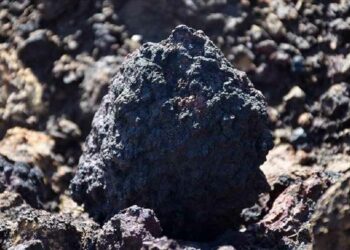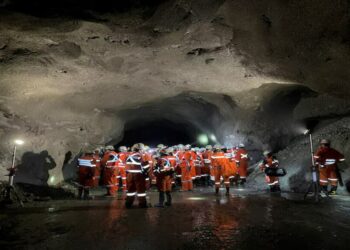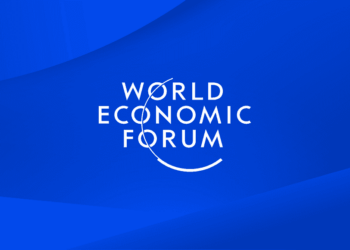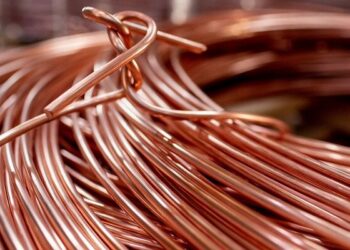Two technology providers in Finland are developing a water treatment solution that will be able to selectively recover metals from mining-impacted waters. The companies Weeefiner and Sensmet are collaborating to tackle the water treatment challenges posed by end-of-life mining sites, whilst also salvaging some of the valuable materials that mine waters frequently contain. The development project has received funding from Rio Tinto Group’s sustainable water treatment challenge program.
Former mines have the potential to adversely impact local water resources, so mitigation procedures are established for environmental protection. Many different water treatment methods are available to meet this requirement, but they can be costly and vary in their levels of efficiency.
Weeefiner and Sensmet are therefore developing an IRU (Intelligent Recovery Unit) that will deliver game-changing benefits; not just in process efficiency but also to selectively recover critical minerals and rare earth metals. The metal recovery and water treatment solution will be provided by Weeefiner, and the online measurement technology (to enable continuous process control), will be provided by Sensmet.
Recognising the advantages of a circular economy, Weeefiner has focused on innovative water treatment solutions that simultaneously enable the recovery of dissolved materials. Weeefiner’s 4D Scavenger® technology can change the way water is treated in many different industries. In the IRU project, the objective is to customise the technology to meet the specific needs of the mining industry.
“To-date, water treatment methods at mining sites have focused on decontamination by precipitation, which requires large amounts of chemicals such as lime, and represents a heavy carbon footprint,” explains Mikko Hänninen, Weeefiner CEO. “This process also produces sludge that contains contaminants and represents a further disposal challenge. At Weeefiner, our highly selective 4D Scavenger technology is designed to target and extract dissolved metals for reuse, which significantly reduces the downstream water treatment burden. Mining sites will be able to use the IRU to produce sustainable raw materials while simultaneously meeting regulatory requirements.”
In common with most industrial processes, continuous monitoring and control is necessary to optimise the IRU’s performance; not least because it would not be sensible to run the treatment process until there is a breakthrough of contaminants. Laboratory analysis would not be feasible at most remote sites because that would be costly and would incur a significant delay. Sensmet’s µDOES® analyser can provide real-time, simultaneous quantification of dissolved metal concentrations, such as Ni, Co, Li, Mn and Cu in hydrometallurgical processes and mining waters. The µDOES® has been designed to streamline the measurement process with comparable analytical performance to laboratory ICP-OES, but with the robustness required for continuous and fully automated industrial process monitoring. The µDOES® enhances the IRU by measuring metal concentrations both before and after 4D Scavenger® treatment, enabling automated process optimisation.
Explaining the potential of µDOES® analyser technology, Sensmet CEO, Dr Toni Laurila says: “Previously, Sensmet has demonstrated the advantages of real-time analysis of metal concentrations in battery recycling and production processes, resulting in increased efficiency, lower costs, higher output, and improved product quality. However, our technology offers numerous benefits to a wide range of industries that need high quality real-time analysis on-site. We are therefore delighted that our cutting-edge analytical technology is being utilised in the IRU collaboration to optimise the recovery of strategic metals while reducing negative impacts on the environment.”
The IRU project recently received a funding award from a Rio Tinto program known as ‘Mine-influenced water – sustainable water treatment challenge’, through which successful applicants may receive up to US$2 million of co-funding over three years. Explaining the thinking behind the scheme, Rio Tinto’s Nick Gurieff says: “We recognise the responsibilities we have as long-term stewards of natural resources, and we are committed to understanding and mitigating the risks and impacts of our operations from the beginning of an operation’s life to beyond closure.
“The perpetual obligation to treat water can be challenging and costly, particularly at large sites, so our objective is to find new solutions that are sustainable both environmentally and financially. We know that mine-affected water can contain significant levels of potentially valuable materials, so the ideal scenario is to find ways to both treat the water and recover the dissolved minerals and rare earth metals.”
Weeefiner and Sensmet are now working with Rio Tinto to develop a solution that can be deployed in the field. Initially, synthetic water will be treated at research facilities in Finland to demonstrate the effective monitoring and removal of key metals such as copper, cobalt and nickel. Once the removal of these elements has been proven to be effective, Rio Tinto will supply samples from closed mining sites that will undergo a similar assessment.
After the mineral extraction from mine water concept has been proven in the laboratory, pilot units will be developed for initial evaluation at two closed mine sites. Summarising, Nick Gurieff says: “This is one of our most exciting innovation projects, and we are hopeful that it will enable us to recover strategic metals that would have otherwise been lost. We will track measures such as the recovery cost of 1 kg of copper, for example, and this will allow us to determine whether this new technology could be self-funding. However, that is not the primary objective; if we can effectively remove metals, the environmental challenge will be lowered and subsequent treatment downstream will be that much easier.
“By recovering strategic metals such as copper from waste, we hope that the IRU project will contribute to a more circular economy and improve the availability of battery metals as the world decarbonises its energy and transport infrastructure.”










